Strolling along Reggio Calabria’s waterfront promenade, I feel like I’ve wandered into a living postcard. The walkway gives you jaw-dropping views across the Strait of Messina to Sicily, and on clear days, Mount Etna looms in the distance.
Many people consider this seaside path one of Italy’s most beautiful promenades. Honestly, I keep coming back here every evening during my stay.
What really makes Reggio’s promenade magical? It’s the gorgeous Art Nouveau buildings lining the route, blending natural beauty with elegant architecture. After the devastating 1908 earthquake, builders raised these ornate structures, adding intricate woodwork, cast iron, and stained glass that catch the sun just right.
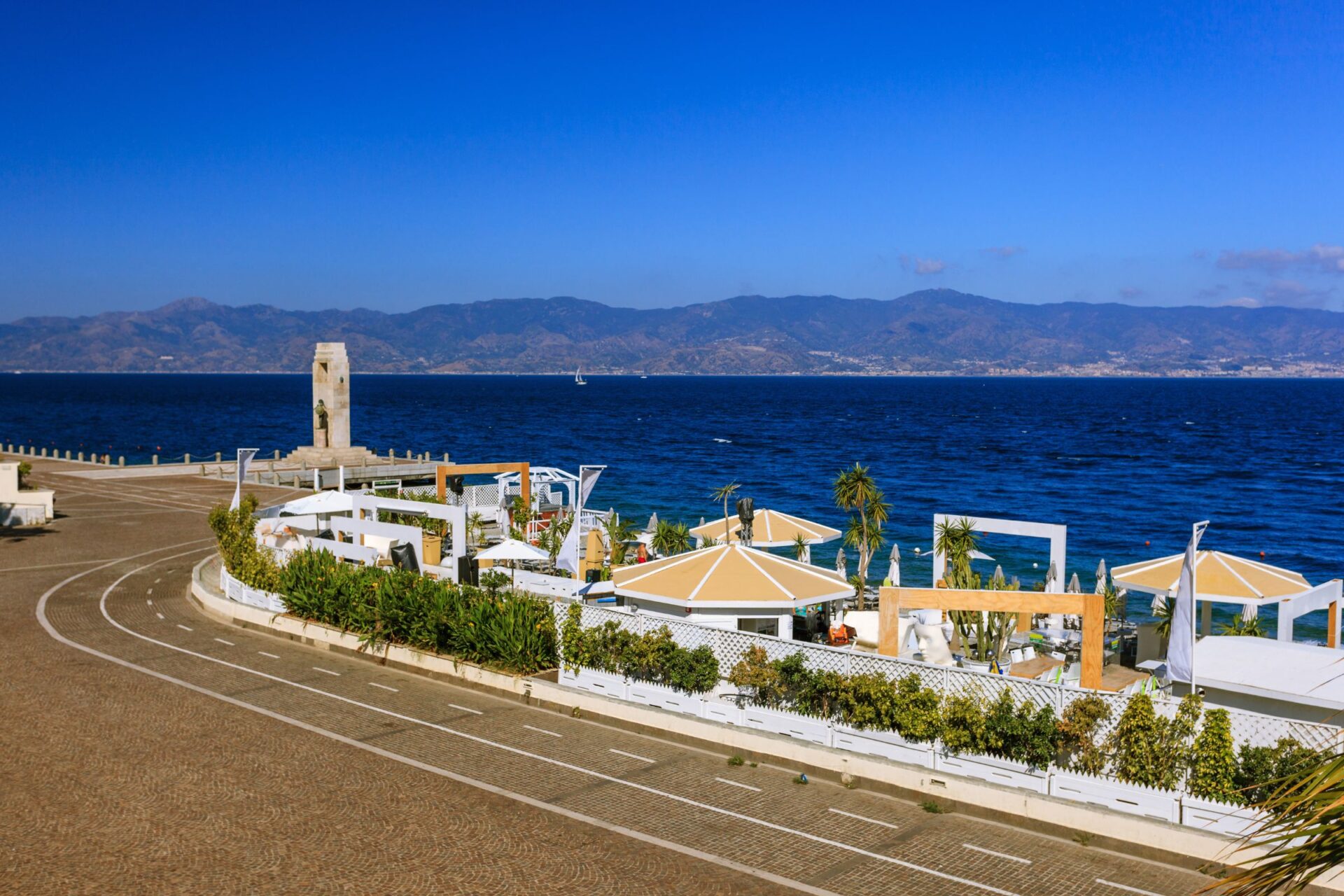
The Belle Époque and Liberty style (Italy’s take on Art Nouveau) give Reggio its unique charm. These villas and public buildings show off a flair that’s hard to find elsewhere in Calabria.
I love how this underrated southern city balances its laid-back vibe with a surprising amount of culture. The grid layout from the city’s reconstruction makes wandering easy, and the promenade always feels like the perfect place to start exploring.
As the sun dips behind Sicily, locals and visitors join the traditional passeggiata. You really feel the heartbeat of city life here.
Discovering the Reggio Promenade: Sicily’s Art Nouveau Gem
Reggio Calabria’s promenade stands out as Italy’s most beautiful seafront walk. It gives you stunning views across the Strait of Messina, with Sicily right there on the horizon.
This elegant strip by the water mixes old-world charm with architectural splendor that draws travelers from everywhere.
History and Evolution of the Promenade
I first heard about the promenade’s backstory during my recent trip to Reggio Calabria. The walkway didn’t always look this grand.
After the 1908 earthquake shook the region, the city had to rebuild almost from scratch. Planners reimagined the promenade, turning it from a simple path into a showpiece for the city.
Local architects ran with the Liberty Style (Italian Art Nouveau), which was all the rage in Europe back then. As I walked the wide, palm-lined boulevard, I could sense how each era left its stamp.

The 1920s brought major expansions. Then, in the early 2000s, renovations gave the promenade its current sparkle.
Now, people treat it as both a cultural treasure and the social center of Reggio.
Liberty Style Architecture and Art Nouveau Influence
The buildings along the promenade flaunt Liberty Style, Italy’s spin on Art Nouveau. I immediately noticed the ornate balconies, swirling ironwork, and leafy motifs that define this style.
Many villas and public spaces show off asymmetrical shapes and nature-inspired decorations. The facades often use local materials, but with a modern twist from the early 1900s.
Palazzo Zani, for example, stands out with its curved windows and flowery stucco. The style here isn’t just about looking pretty—it represents Reggio’s way of embracing the new while staying rooted in Mediterranean traditions.
Liberty Style Features Along the Promenade:
- Curved ironwork balconies
- Floral motifs in stonework
- Colorful ceramic decorations
- Asymmetrical window designs
- Nature-inspired ornamentation

Image Source: Wikimedia Commons
Signature Landmarks Along the Promenade
Exploring the promenade, I kept finding standout landmarks. The most famous is the Lungomare Falcomatà, named after the mayor who pushed for its restoration in the 1990s.
The Arena dello Stretto, with its semi-circular shape, reminded me of an ancient Greek theater. It hosts cultural events with the Sicilian mountains as a backdrop.
I spent a good chunk of time at the Archaeological Museum, which houses the Riace Bronzes—those legendary Greek warrior statues pulled from the sea. The museum itself has Liberty Style touches that blend nicely with its classical treasures.
You can’t skip the monument to Vittorio Emanuele II or the stately palms lining the walkway. Every evening, crowds gather for the passeggiata, filling the promenade with a lively buzz as the sun sets over Sicily.

Image Source: Wikimedia Commons
Walking Tour: Highlights and Sights Along Reggio’s Elegant Promenade
The Lungomare Falcomatà gives you one of Italy’s most breathtaking coastal walks. The Tyrrhenian Sea stretches out ahead, and Sicily’s outline creates a dreamy backdrop.
I think this promenade nails the balance between natural beauty and cultural depth.
Iconic Sea Views and the Tyrrhenian Coastline
As I wandered, the panoramic sea views honestly stopped me in my tracks. On clear days, Sicily and Mount Etna are right there, across the water.
Locals call this spot “the balcony of the Mediterranean,” and I get why. The promenade runs about 1.7 kilometers, with tall palms swaying in the breeze.
I suggest timing your walk for sunset—the colors on the water are unreal. Several viewing platforms pop up along the way, perfect for photos.
My favorite is near the monument to fallen sailors, where the strait narrows and Sicily looks so close you could almost swim over.
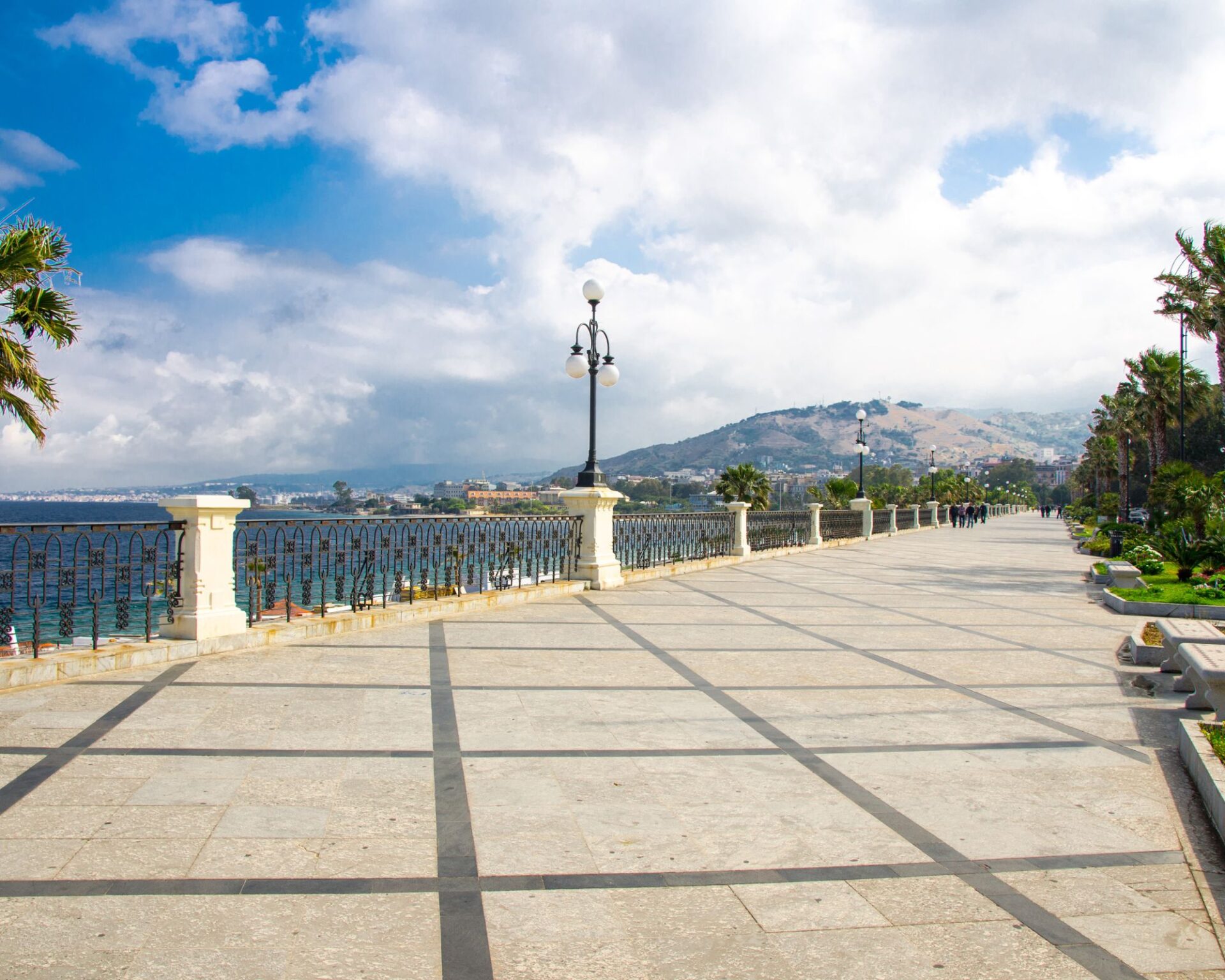
Art Galleries and Local Cultural Experiences
The promenade isn’t just about the views—it’s a cultural magnet. The MArRC (National Archaeological Museum of Reggio Calabria) sits at the northern end, showing off the famous Riace Bronzes.
I ducked into a few smaller galleries where local artists pull inspiration straight from the sea. The Pinacoteca Civica displays pieces that capture Calabria’s history and rugged landscapes.
Street musicians and performers often fill the walkway with traditional Calabrian tunes. If you’re here in summer, keep an eye out for cultural events—they pop up all the time.
Local Art Spots:
- MArRC (National Archaeological Museum)
- Pinacoteca Civica
- Open-air exhibitions (seasonal)
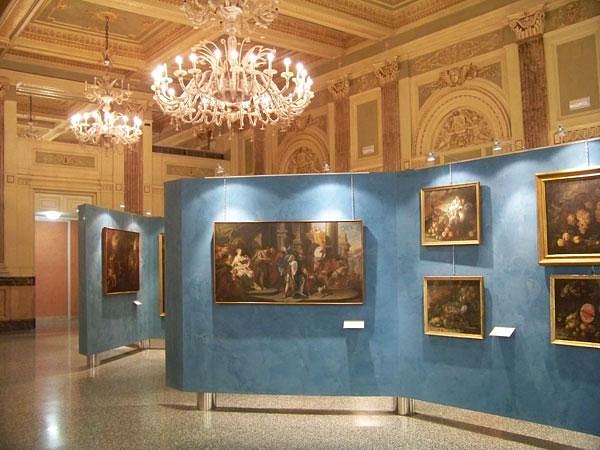
Image Source: Tripadvisor
Shopping and Artisan Boutiques
If you wander off the promenade, you’ll hit charming shopping streets. Corso Garibaldi runs parallel and is lined with boutiques selling Italian fashion and local designs.
I stumbled on some fantastic artisan shops with handcrafted Calabrian ceramics and bergamot products—the citrus scent lingers everywhere.
Foodies will love the little delis selling ‘nduja and Calabrian honey. I grabbed a few treats to take home.
Sometimes, seasonal markets pop up along the promenade. Local craftspeople show off jewelry and art, and I found a necklace that still reminds me of those sea views.
Art Nouveau Inspirations: Exploring Nearby Tuscan Connections
While soaking up Reggio’s promenade, I started noticing Art Nouveau touches that link this Calabrian spot to Tuscany’s Liberty style scene. It’s a cool cultural bridge between Italy’s south and center.
Viareggio and the Liberty Style Movement
Walking through Viareggio feels like you’ve wandered into an Art Nouveau fantasy. This Tuscan coastal town fully embraced the Liberty style in the early 1900s.
The beachfront dazzles with gorgeous examples of the movement. I recommend stopping at Gran Caffè Margherita, a Liberty masterpiece with flowing lines and nature-inspired details.
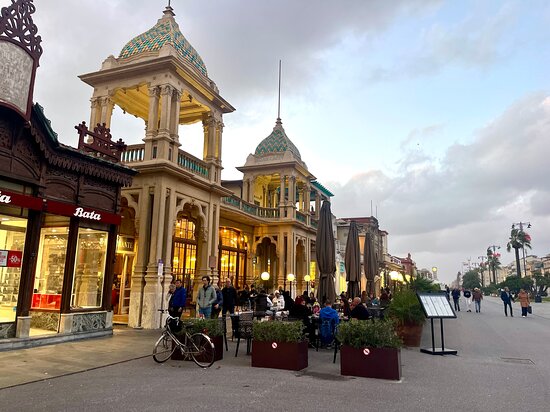
Image Source: Tripadvisor
Villas along Viale Giosuè Carducci show off asymmetrical facades, ironwork, and floral patterns. The way Liberty style meshes with seaside architecture here is something special.
Many buildings even weave in maritime themes—it’s a perfect blend of art and local identity.
Masterpieces of Galileo Chini
You can’t talk about Tuscany’s Art Nouveau without mentioning Galileo Chini. His work in Montecatini Terme, especially at the Terme Tettuccio spa, left me speechless.
Chini’s ceramic decorations and painted glass windows turn ordinary spaces into lively art galleries. His use of color and organic shapes makes everything feel in motion.
The Excelsior Hotel in Montecatini highlights his ability to mix art with daily life. Chini’s touch here shows how Art Nouveau aimed to make everyday experiences beautiful.
His influence even reaches Florence, where you’ll spot his decorative work on several buildings. It’s a fun trail for anyone interested in Tuscan Art Nouveau.
Other Art Nouveau Towns: Lucca, Forte dei Marmi & Pietrasanta
Lucca caught me off guard with its hidden Art Nouveau corners. Behind those medieval walls, you’ll find Liberty buildings with flowing lines and iron details.
Palazzo Pfanner’s garden echoes the style’s love of nature, and Caffè Di Simo still keeps its original Liberty interiors.

Forte dei Marmi boasts exclusive villas that mix Liberty style with classic beachside architecture. The town’s early 20th-century wealth attracted artists whose work you can still glimpse behind lush gardens.
Pietrasanta, famous for sculpture, also caught the Liberty bug. Here, architects designed elegant villas and shops, and if you look closely, you’ll spot flower-shaped windows and curvy metalwork on facades.
Seaside Pleasures: Dining, Nightlife, and Spa Experiences
Reggio Calabria’s coastline isn’t just about the views—it’s a hotspot for great food, lively evenings, and some serious pampering. I found plenty to love during my visit.
Seafood Restaurants and Tuscan Cuisine
The seafood here blew me away. Fresh catches from the Strait of Messina arrive daily, and chefs whip them into dishes you won’t soon forget.
My favorite was swordfish alla ghiotta, cooked with olives, capers, and tomatoes—it really tastes like Calabria on a plate. For a real treat, check out Trattoria del Mare, where you can eat just steps from the sea.
Their sea urchin pasta made me see why locals rave about their seafood. While Calabrian cuisine rules the scene, I also found Tuscan-inspired spots near the promenade.
Ristorante Toscana serves up bistecca alla fiorentina and wild boar pappardelle that made me feel like I’d teleported to Florence.

Fine Dining: Michelin-Starred & Iconic Establishments
Reggio surprised me with its upscale dining. Ristorante La Magnolia stands out, earning a Michelin star for its creative spin on regional classics.
Their tasting menu, featuring local nduja and bergamot, hits the sweet spot between tradition and innovation. The sea view from their dining room takes the meal to another level.
For special occasions, Grand Hotel Principe di Piemonte is a must. Their rooftop restaurant serves breakfast with sweeping views of the strait.
By night, it turns into an elegant spot for oysters and champagne at sunset. I could have stayed there for hours.
Evening Strolls, Nightlife, and Seaside Resorts
As the sun goes down, the Lungomare Falcomata buzzes with life. Evening walks along this broad promenade became my nightly ritual.
The lights across the strait add a touch of magic. For nightlife, you’ll find everything from cozy wine bars to lively clubs by the water.
Bar Messina mixes up craft cocktails and hosts live jazz on weekends. If you’re after something more energetic, Club Mediterraneo keeps the music going until sunrise.
Seaside resorts here offer full relaxation packages. I tried out Lido Azzurro, where spa treatments use local bergamot and olive oils.
Their signature massage with Calabrian orange oils melted my travel stress away. Some hotels also have wellness centers with both classic and modern treatments.
My favorite? An afternoon in the thermal pools, gazing out over the strait—a perfect way to unwind after exploring the city.
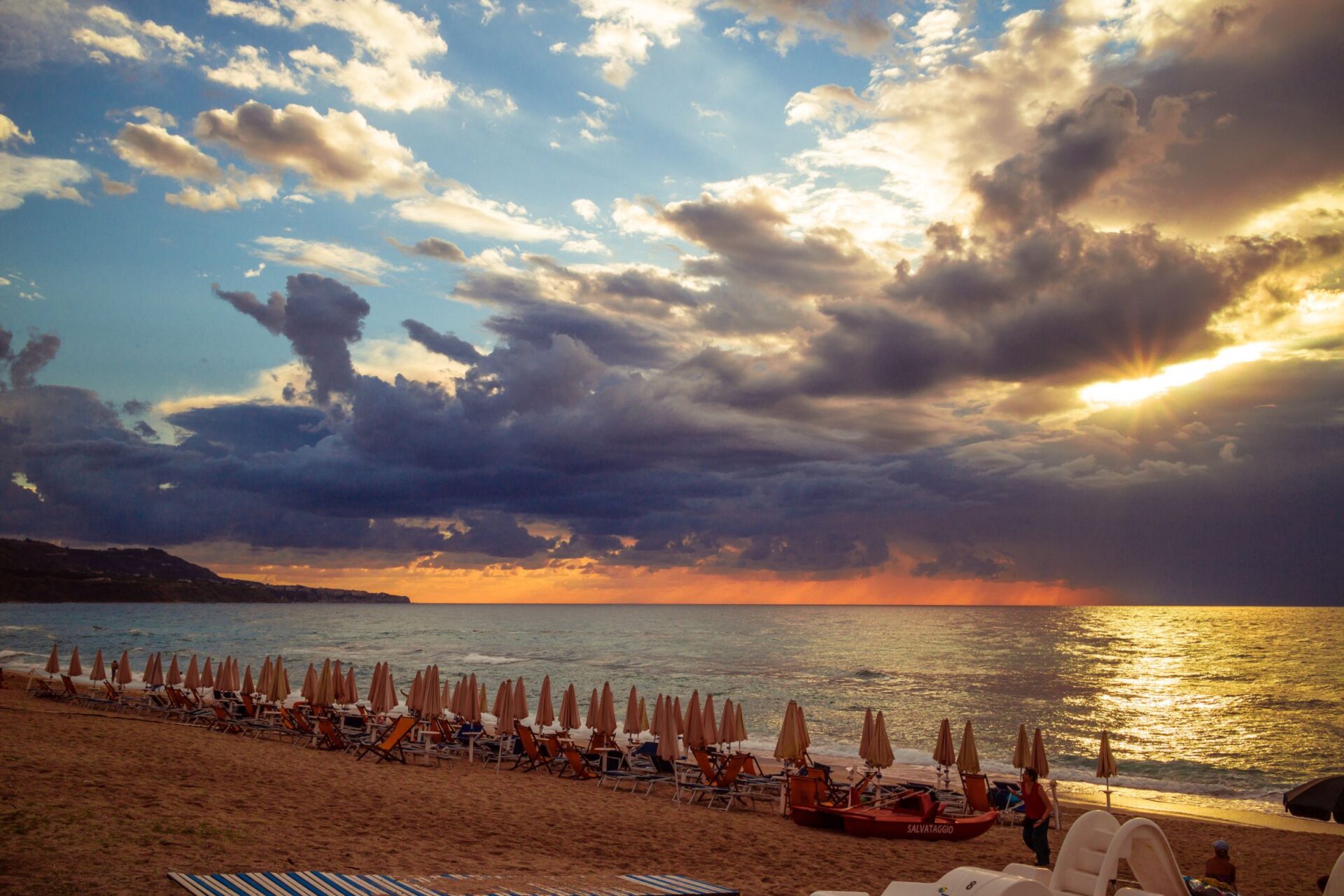
Essential Travel Tips for Your Sicilian and Tuscan Adventure
If you’re planning a trip through Sicily and Tuscany, a little strategy goes a long way. I’ve pulled together my best advice on getting around, the best times to visit, and where to stay so you can make the most of these gorgeous Italian regions.
Getting There: Airports, Trains, and Coastal Connections
Flying into Galileo Galilei Airport in Pisa just feels easier than dealing with Florence’s crowds. I noticed way better rental car choices there, and I could get to the coast much faster.
If you’re heading to Sicily, Palermo and Catania airports act as the main gateways. I’d pick Catania if you plan to explore eastern Sicily, especially spots like Taormina or Syracuse.
Trains connect the big cities smoothly. The Viareggio train station makes a great jumping-off point for the Tuscan coast. From there, Cinque Terre, Florence, and Pisa are all within easy reach.
If you’re traveling between Tuscany and Sicily, you’ve got a few options:
- Take an overnight ferry from Naples or Civitavecchia to Palermo.
- Book a flight from Florence or Pisa to Palermo or Catania.
- Hop on a train to Sicily (yes, the train goes right onto the ferry!).
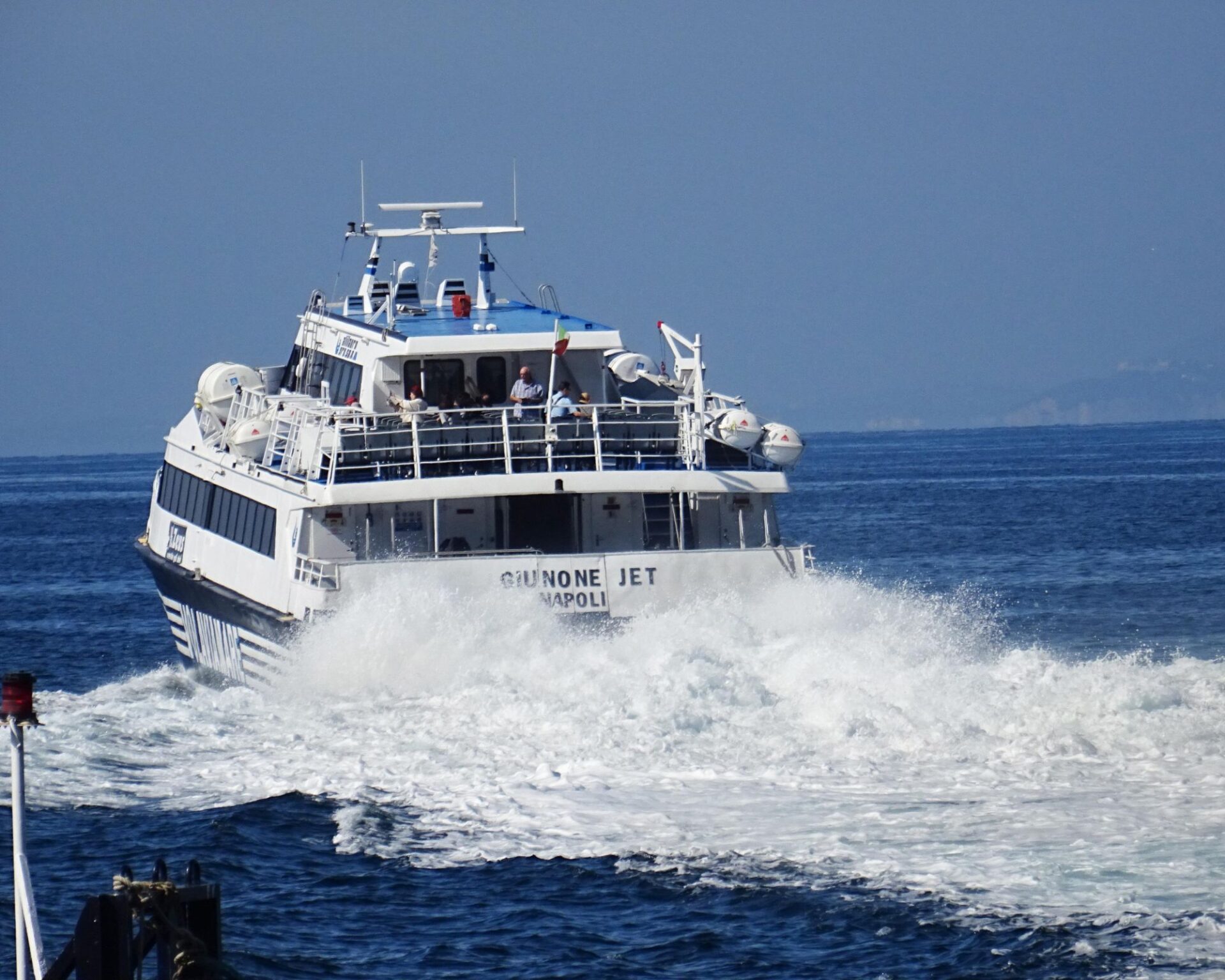
The Best Time to Visit and Practical Advice
April through June, and then again September to October, bring the best mix of nice weather and manageable crowds. July and August? Expect scorching days and way too many tourists, especially in places like Taormina.
When planning your route, try to group cities in an order that makes sense. I once wasted hours zigzagging across Sicily because I didn’t map things out. Seriously, just plot everything on a map to avoid backtracking.
Driving in Sicily takes some nerve, but you get the freedom to find those out-of-the-way gems. Parking in cities can be a headache, so maybe:
- Stick to public transport in the bigger cities.
- Rent a car just for countryside adventures.
- Look for places to stay that offer parking.
Bring some cash for small towns, since cards aren’t always accepted. Also, a lot of historic sites shut down earlier than you’d think, so double-check those hours before you go.
Recommended Hotels and Accommodation Experiences
Hotel Excelsior in Taormina gives you those sweeping Mediterranean views and a real taste of classic Sicilian luxury. I splurged on three nights there, and honestly, the cliff-side sunsets over the sea made it all feel worth it.
If you’re looking for value in Sicily, I’d go for:
- Boutique B&Bs tucked away in Ortigia (Syracuse)
- Renovated farmhouses, or masserie, out in the countryside
- Apartment rentals right in the heart of Palermo’s old town
In Tuscany, countryside agriturismi offer a genuine experience—think home-cooked meals and local wines. I even joined a cooking class and finally figured out how to make pasta from scratch!
When you book, ask for a room away from street noise, especially in lively places like Palermo. Air conditioning makes a huge difference in summer, and if you’re traveling in winter, heating is a must—stone walls in older buildings don’t really keep the warmth in.

